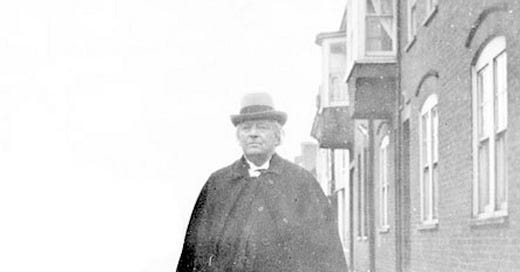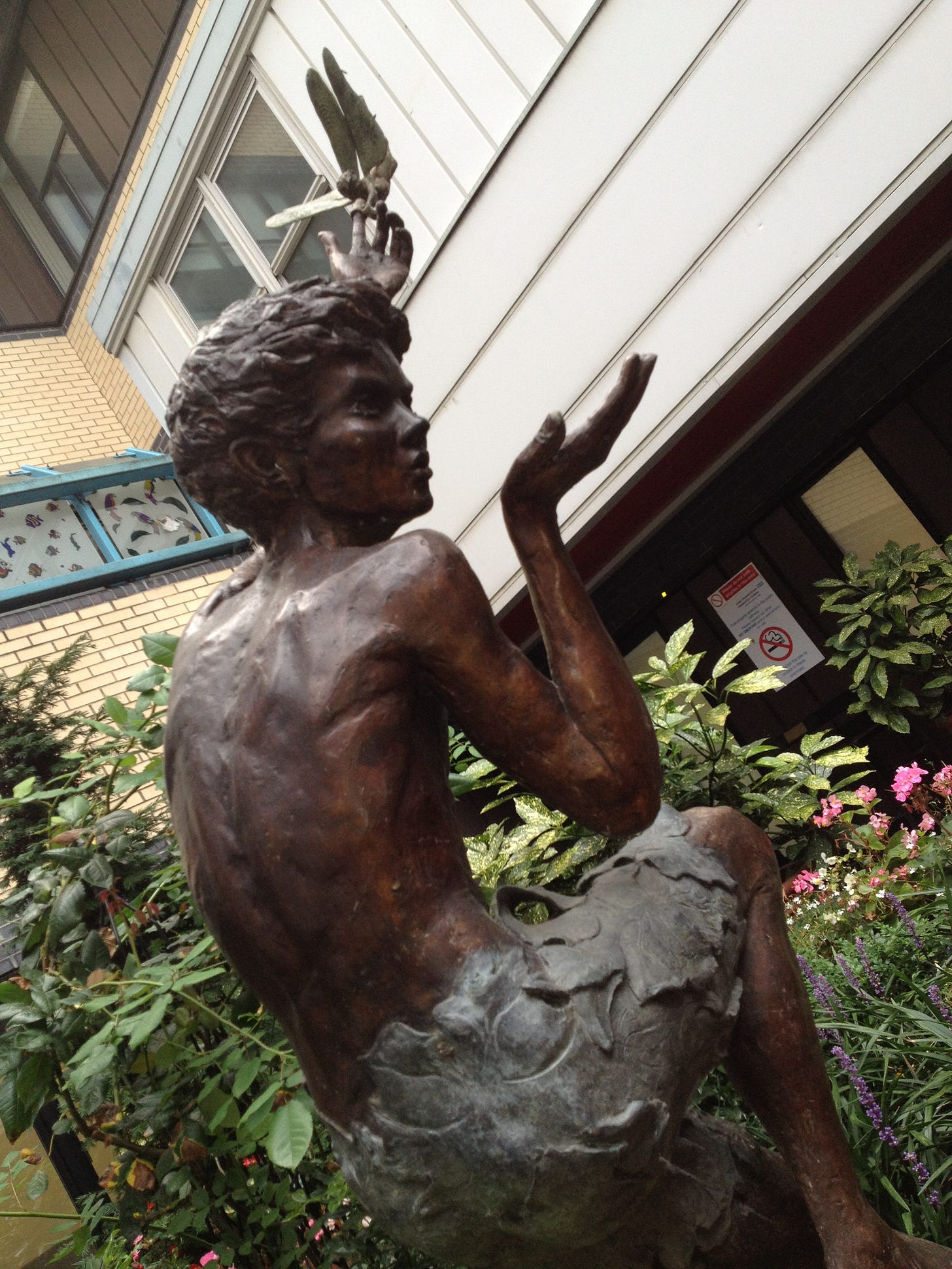Entering the strange world of Arthur Machen
Robert Kingham helps us pull back the thin veil of London
If you were with us last summer you might remember we spoke to Minimum Labyrinth, the creative partnership of Robert Kingham and Rich Cochrane that has produced a number of brilliant walking tours, audio dramas, films and books, which focus on the weirder, more marginal corners of London’s history.
This year, the duo are reviving their Thin Veil of London walking tour, which explores the lesser-known corners of Holborn and Bloomsbury via the work of the writer and ‘folk horror’ pioneer Arthur Machen (Machen would have been 160 years old this year but is, as far as we know, not around to celebrate… at least on this side of the veil).
Last week we got Robert Kingham on the phone to find out a bit more about Machen, his unique way of perceiving London, and why he has been an inspiration to generations of writers, artists and musicians, from HP Lovecraft through to Mark E. Smith.
Hi Robert. We didn’t know very much about Arthur Machen until we went on one of your walking tours back in 2019. How you did you come across him and what it is about Machen that fascinates you?
Even though he has been heavily anthologised, and even though I devoured all those weird horror anthologies as a teenager; I don’t remember reading any Machen at that age.
Instead, like a lot of people I imagine, I have Peter Ackroyd’s London: A Biography to thank for introducing me to Arthur Machen. Ackroyd calls him a “cockney visionary” and sort of pigeonholes him, along with Thomas De Quincey and others, as being one of those ‘dreamers of London’ who create these strange other worlds.
Back in 2009, when I was doing a show about ley lines at the Museum of London with my writing partner Rich; the museum said they were doing something about urban myths and asked if we could do a walk for them. That was when I started to really dig into Machen and found quite a lot that I wasn’t expecting.
He’s kind of unclassifiable, isn’t he? He’s been called the first modern horror writer, but he also had an influence on magical realism and there’s a real spiritual element running through his work.
For me, there two sides to his writing. There’s what’s usually called his ‘horror’ stuff, which is the part that influenced people like Lovecraft, Guillermo Del Toro and Stephen King. Those stories have a very original, almost theological bent to them, where Machen created his own spiritual look on life. A lot of the horror elements are there to warn the characters - and the reader - about the perils of going into this other world of the mind.
Then there are the London stories, which are similar in that he’s writing about London with this particularly outsider’s view. Machen was born in Wales and only came to London in the 1880s as a penniless journalist. He quickly discovered that London is not easy to live in if you don’t have much money, so he took to walking the streets, exploring the nooks and crannies of London. That’s what his characters do as well: they go on these walks to find themselves but often stumble upon weird things they can’t find again. He really had this wonderful way of looking at London, and appreciating it and understanding it from a different angle.
What really appeals to me about Machen though, is that he offers a different way of perceiving London. It’s sometimes lumped in with psychogeography and this idea that there’s a hidden world underneath that you just need to go for looking. And it is a little like that, but it’s also quite hard to pin down.
Coming to Machen after the psychogeography ‘craze’ is difficult, because you almost have to forget what you know about psychogeography and take him on his own terms.
It seemed to me that part of the idea of psychogeography was that there’s this hidden meaning buried in the streets themselves and you just need to be tuned in somehow to access that. But, for me, it’s much more about how you choose to see things and whether you choose to see them at a surface level or to look more deeply.
That’s what we try to do with all the walks we put on: we try and understand more about the people who lived there and the things that went on. Which is nothing more than local history really! I wouldn’t call it ‘psychogeography’ necessarily.
The most common response we get on the walks is '“I know this part of London, but I’ve never seen it quite like this.” And of course, you can walk through the same streets every day and be unaware of its history and its stories and what was there years before.
I can’t remember the word for it, but there’s a weird phenomenon where, once a building has gone in London, it’s really hard to remember that it was ever there. Even though you might have passed it every day, it just disappears from your memory. What fascinates me is building those layers back up, and I think that was what Machen was doing a bit of too. He was trying to bring the spirit of London into himself and enjoy the city without having to spend lots of money. Which we can all relate to, I think.
In one of his autobiographies, Far Off Things, he writes:
“But now towards the end of the year 1882, after I had known London, on and off, for nearly two and a half years, all that feeling of its immense gaiety with which I had approached it in the first place was dropping from me. I began to realise, very gradually and by dismal degrees, that the gaieties of London were commodities that had to be bought with money, and that I had none.”
The Thin Veil isn’t a guided walk around the places that feature in Machen’s stories. It’s more like you’re taking Machen’s ideas and his theology and his philosophy, and using that as a kind of lens to dive into quite a specific part of London. What made you choose that area around Theobalds Road to dig into?
There is a wonderful Machen quote from Things Near and Far, which goes:
Keep reading with a 7-day free trial
Subscribe to London in Bits to keep reading this post and get 7 days of free access to the full post archives.






